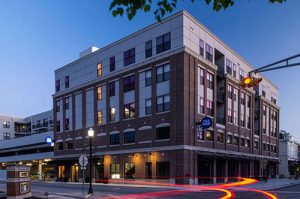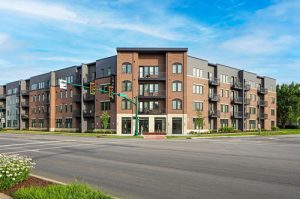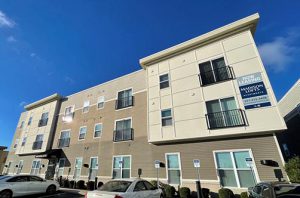Multi-family property owners and developers now have the opportunity to address standard WiFi and Internet challenges in their buildings. Innovative solutions are available with the emergence of Full Service Internet Providers (FISP) and Managed Service Providers (MSP) specializing in Fiber and WiFi integration for multi-tenant properties. These providers offer services such as Fiber to the Home/Unit (FTTH), Property-Wide WiFi (PWW), WiFi as a Service (WAAS), Gigabit Services, and Building Wide WiFi Calling capabilities. By leveraging these cutting-edge Internet services, property owners can enhance resident satisfaction, modernize their Internet infrastructure, and generate additional revenue.
Many property owners are unaware they have a choice when selecting an Internet provider for their properties. As a result, they often enter into deals with local “Big Box” providers without considering alternatives. Unfortunately, these arrangements may undermine the value and quality of the network, as the lack of competition and oversight discourages the delivery of cutting-edge services. Additionally, offering multiple wiring choices to residents does not significantly improve their options if the choices available are of poor quality. Common telecommunication challenges faced by old and new multi-family buildings include limited competition, lack of incentive for advanced services, poor system design, and inadequate wiring choices.
To overcome these challenges, multi-family property owners should explore the services offered by specialized FISPs and MSPs. These providers offer advanced Internet solutions that can improve resident satisfaction, future-proof the building’s Internet/data wiring infrastructure, and generate additional revenue through per-door ancillary revenue and increased property value. Property owners can achieve a self-sustaining, resident-funded Internet system that generates long-term profits by implementing the right business strategy.
In conclusion, by embracing innovative WiFi and Internet solutions offered by FISPs and MSPs, multi-family property owners can overcome common challenges, provide cutting-edge services to residents, and optimize their Internet infrastructure for long-term success.
Addressing Telecommunication Challenges in Multi-Family Properties
Multi-family properties often face significant challenges in their telecommunication infrastructure, which can hinder the delivery of cutting-edge services and meet the demands of residents. These challenges arise from the lack of incentive for innovation in local Internet Service Provider’s (ISPs) business models, leading to outdated technologies and poor customer service. Property owners must recognize these issues and seek solutions that cater to the evolving needs of residents.
Outdated Infrastructure Design:
The telecommunication infrastructure in many properties is designed by local ISPs who prioritize their business models over providing innovative services. Coaxial and twisted pair wiring, still prevalent in new builds, create bottlenecks and hinder the benefits of fiber connectivity. Property owners should pay attention to the type of wiring connecting modems to the wall to identify outdated infrastructure.
Insufficient Speeds and Scalability:
Standard cable/coaxial and DSL offerings fall short in delivering the speeds and expandability required by today’s standards. To meet the demands of residents, it is essential to upgrade the infrastructure and provide faster and more scalable Internet services.
Resident Demands:
Residents, especially millennials and the working class, expect secure, high-speed, and user-friendly Internet services. Meeting these demands is crucial for attracting and retaining tenants in multi-family properties.
Need for Upgraded Wiring:
Many buildings, such as Gigabit Internet, lack the necessary wiring infrastructure to support current and future data requirements. Upgrading the wiring becomes imperative to ensure reliable and high-performance connectivity.
Limitations of Existing Agreements:
Some properties have agreements with local ISPs that may restrict the property owners from improving services. However, recent FCC laws have rendered many of these agreements unenforceable, allowing property owners to explore alternative solutions.
The Dominance of Outdated Monopolies:
Many properties suffer under-served conditions due to the dominance of quasi-monopolistic ISPs with outdated business models and subpar customer service. These “Big Box” providers often receive low ratings, highlighting the need for better alternatives.
Addressing telecommunication challenges in multi-family properties requires recognizing the limitations of existing infrastructure and seeking innovative solutions. Upgrading wiring, exploring alternative service providers, and prioritizing resident demands can significantly improve Internet services, enhance tenant satisfaction, and attract prospective residents in the highly competitive market.
Overcoming Communication Challenges in Multi-Family Properties: A Guide
Telecommunication challenges in multi-family properties can be overcome by implementing effective strategies and partnering with reliable Full Service Internet Providers. Property owners can enhance resident satisfaction, increase occupancy rates, and generate additional revenue by choosing the right technologies, offering cutting-edge WiFi solutions, and leveraging marketing opportunities. This guide explores practical steps to overcome these challenges and maximize the potential of telecommunication services in multi-family properties.
Select a Full-Service Internet Provider:
Partner with a Full Service Internet Provider that prioritizes residents’ needs and offers easy-to-use, fast, and reliable Internet services. Avoid relying on traditional “Big Box” providers that may compromise quality for their business interests.
Upgrade Wiring Technologies:
Invest in modern wiring technologies such as Fiber, Cat 5e, and Cat 6a to ensure high-speed and efficient connectivity. Design or redesign the infrastructure with quality of service in mind, rather than succumbing to providers’ limitations.
Implement Cutting-Edge WiFi Solutions:
Deploy cutting-edge, enterprise-class WiFi design and equipment to provide facility-wide, seamless access that is secure, fast, and reliable. With the latest technologies, this can be implemented quickly and funded entirely by residents.
Utilize Marketing Opportunities:
During periods of low occupancy, offer ancillary services as value-added marketing tools. For example, promote “Gig-Fiber Internet Included with Rent” or “Property-Wide WiFi Included” to attract and retain tenants. Additionally, consider aftermarket internet systems to implement effective marketing campaigns and increase occupancy rates.
Understand Marketing and Right of Access Agreements:
Gain a thorough understanding of existing marketing and right-of-access agreements. If desired, explore options to terminate these agreements, allowing more flexibility in providing desired services.
Embrace Modern Business Strategies:
Choose a modern business strategy to seize the revenue opportunities in the telecommunication space. Consider various approaches such as inclusive amenities, profit sharing through utility billing, or bundling bulk internet services with other property improvements to create a multiplier effect. These strategies can increase resident satisfaction, justify rent raises, and enhance the property’s overall value.
Overcoming telecommunication challenges in multi-family properties requires proactive decision-making and a commitment to meeting residents’ demands. By partnering with reliable Full Service Internet Providers, upgrading infrastructure, implementing cutting-edge WiFi solutions, utilizing marketing opportunities, and embracing modern business strategies, property owners can enhance the quality of telecommunication services, attract and retain tenants, and maximize revenue potential. For industry-leading Property-Wide WiFi services, consider ORI, a trusted provider dedicated to delivering high-speed connectivity and increasing property value. For more information, contact (317) 774-2100.






